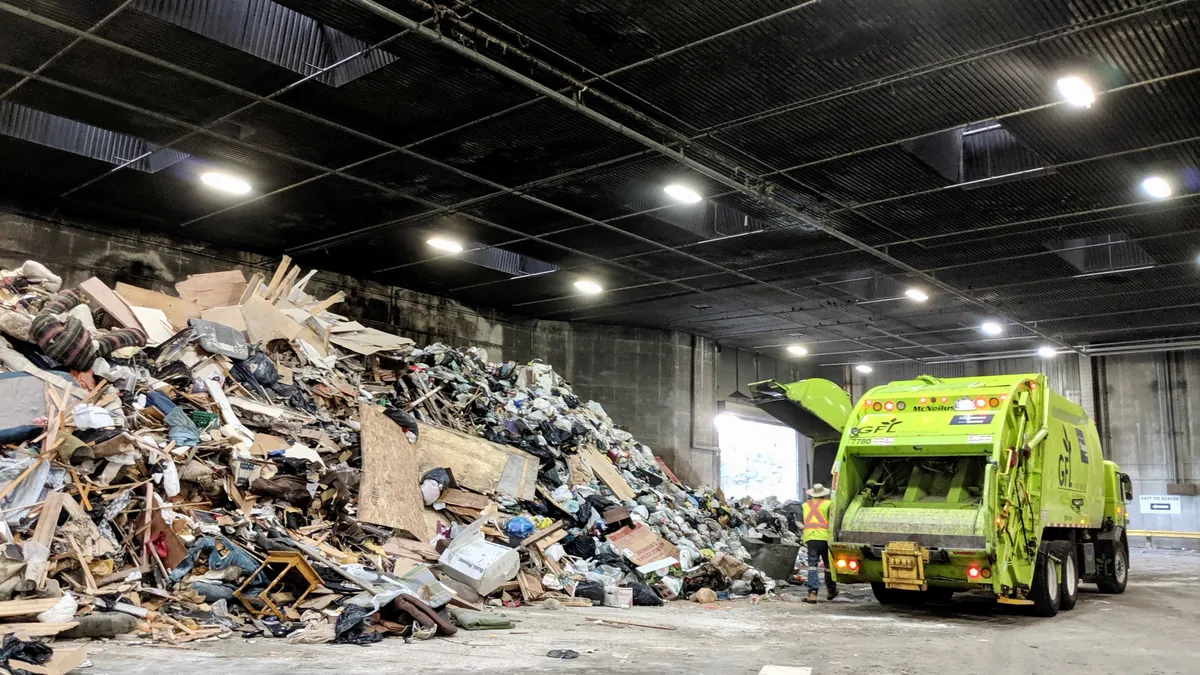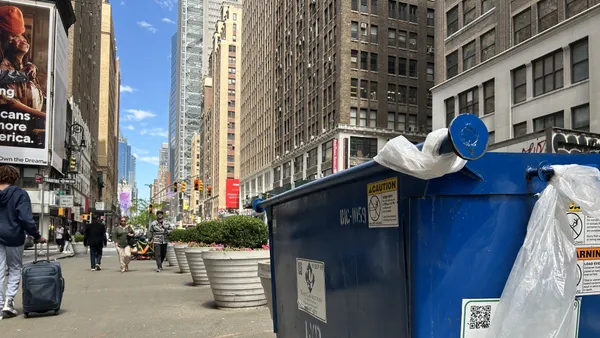All financial information in Canadian dollars unless otherwise noted
2021 Earnings
| Revenue | $5.525B |
| Year-Over-Year Change | 31.7%▲ |
| Net Loss | $606.8M |
Q4 Earnings
| Revenue | $1.539B |
| Year-Over-Year Change | 24.6%▲ |
| Net Loss | $77.4M |
In the nearly two years since it went public, GFL Environmental has continued a dogged pace of expansion throughout North America and says it has exceeded expectations every quarter. The Canada-based company closed out 2021 with an earnings report showing high double-digit percentage growth in revenue, adjusted earnings before interest, taxes, depreciation and amortization (EBITDA) and adjusted free cash flow.
GFL spent nearly $2.3 billion in 2021 on 46 acquisitions worth an estimated $785 million in annual revenue, part of a broader $11.2 billion in M&A spending over the past four years. It also reported $260 million in proceeds from three divestitures of non-core assets, including sales to LRS and Noble Environmental, and it has new plans to spin off its infrastructure division this year.
During a Thursday earnings call, CEO Patrick Dovigi attributed these results to the company's management team having a much larger collective equity stake than other major peers and a "relentless" focus. Asked about his long-term plans, Dovigi said he has no intention of exiting the top job any time soon.
“I'm not going to be happy until I see this stock go from [US$32-33 to US$100], and I think that's at the tip of our fingers," he said.
Restructuring
- GFL plans to divest its infrastructure division for $250 million in proceeds and just under 50% equity interest in a new entity called Green Infrastructure Partners. GIP will also acquire Coco Paving, a company with a large portfolio of aggregate, asphalt, concrete and cement sites described as "one of Canada's largest vertically integrated infrastructure services businesses."
- Dovigi will be chairman of GIP, overseeing a management team led by GFL and Coco veterans. The combined company is expected to have revenue upward of $1.195 billion, with deal synergies of at least $10 million, "meaningful M&A potential" and the potential to go public in future years.
- Following the completion of this deal, which is expected in the second quarter, GFL will combine its soil remediation and liquid waste segments into a new "environmental services" division. Chief Financial Officer Luke Pelosi estimated that that division could potentially grow to around $1 billion in annual revenue for 2022, alongside an estimated $4.9 billion in solid waste revenue.
GFL's executives described the infrastructure spinoff as the final large piece of their portfolio restructuring and a way to potentially allow that business to grow at a faster rate than it would if it had stayed underneath the current company. While GFL grew that business from scratch over about a decade to around $500 million in revenue, it has not been a key focus since the company went public and began focusing more on solid waste deals.
“It’s always been my view that there’s a significant opportunity to create a GFL 2.0 in the infrastructure services business. When we were a private company, we were doing that ourselves, and it was relevant to how we sort of looked and felt compared to the industry peers," said Dovigi. He added that it might have been easier to just sell the assets, "but why would we sell something when we know there’s a significant amount of value to be created for us as shareholders?"
The pro forma GIP business is expected to have around $180 million in EBITDA, but Dovigi sees the possibility to expand that to $1 billion in the next five to six years as the new venture consolidates a very fragmented market.
As for whether GFL might later sell its remaining environmental services division, Dovigi said there are "no thoughts to get out of that any time soon" and he sees plenty of room for growth. He pointed to this week's announcement of the pending sale of US Ecology, which he described as a comparable business, as a sign that the division has strong potential.
Once the GIP deal is complete, GFL intends to use the proceeds to fill the gap in EBITDA from its departing infrastructure line by pursuing new solid waste opportunities.
“This reaffirms our conviction that there is still a lot of opportunity for growth within our solid waste business, both organically and through accretive acquisitions," said Dovigi.
Other updates
- Solid waste revenue grew 20.2% in the fourth quarter, driven in part by a 6.5% increase in core pricing, surcharges and commodity prices. GFL also saw solid waste volume grow 3.4% in the quarter, year over year, though Canadian activity remains muted. Volumes in its other divisions are also recovering at varying paces, with liquid waste activity from the Terrapure acquisition "materially ahead of expectations."
- The GFL Renewables division has joint venture arrangements for renewable natural gas (RNG) projects at four of the company's landfills. Combined with another anticipated five near-term projects, this could generate up to $125 million in adjusted free cash flow — above a previous target.
- While some companies have taken full ownership of such projects, Dovigi said that GFL does not have the same internal capabilities built up yet, and using a joint venture is still a profitable approach. "I think it's fair. I think it will get us to the market as quickly as possible with experts that do this every day," he said.
Looking ahead
- GFL anticipates spending anywhere from $450 million to $525 million on acquisitions this year for an estimated 25 to 30 deals, which could collectively boost revenue as much as $300 million. It also called out the potential for one larger deal. These deals are expected to be self-financed, as GFL continues working to reduce its debt, and weighted more toward solid waste companies and U.S. transactions.
- GFL might also complete a few more divestitures of non-core assets, for possible proceeds of around $60 million. Pelosi said past and future divestiture proceeds will go toward other investments, such as capital expenditures for MRFs and RNG projects. When factoring that in, GFL anticipates spending a net amount upward of $630 million on capital expenditures in 2022.
- While GFL executives said high inflation rates remain a factor, they aren't seeing significant churn as price increases are rolled out, and they believe the extra costs won't be significant for the majority of customers. Pelosi said the low end of GFL's projected 2022 price increase contribution to revenue, at 4.5%, would be enough to cover inflation.
- When excluding the infrastructure business, GFL is projecting 2022 revenue up to $5.925 billion, adjusted EBITDA up to $1.665 billion and adjusted free cash flow up to $655 million. Looking to 2023, GFL projects it could boost revenue by as much as $335 million, adjusted EBITDA by $95 million and adjusted free cash flow by $60 million.











